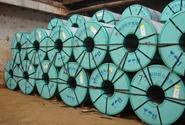Prices

August 7, 2014
US Exports of Steel Hold Steady in June
Written by Sandy Williams
The American Institute for International Steel (AIIS) reports steel exports to NAFTA partners decreased in June but were offset by exports to other countries, particularly Brazil.
The AIIS Statement on June 2014 steel exports is reprinted for your convenience below:
Falls Church, VA. August 7, 2014. Exports of U.S. steel held steady in June, as increases to minor trading partners offset decreases to the North American Free Trade Agreement (NAFTA) countries.
Total exports increased 0.5 percent from May to June to reach 1.04 million net tons, which was 2.2 percent lower than the June 2013 total. Exports were down 6 percent to Mexico to 341,481 net tons, and 4 percent to Canada to 536,502 net tons. Compared to June 2013, these numbers represent an 8 percent increase for Mexico, and a 7 percent decline for Canada.
While exports to the United States’s NAFTA partners were down, other countries made up the difference, most notably Brazil, which more than doubled its imports of American steel to 19,891 net tons; Russia, which bought 6,092 net tons in June, more than six times the amount in the preceding month; and certain other countries in the Western Hemisphere, Asia and Africa.
For the first half of the year, exports were down 6.5 percent from a year earlier to 6.06 million net tons. Year-to-date exports to Canada have declined 4 percent, while exports to Mexico have increased 2.5 percent. Exports to most other trading partners are down for the year, though two notable – and, perhaps, surprising – exceptions are Venezuela (up 139 percent) and Russia (up 123 percent). The raw numbers are still small, though: Venezuela and Russia combined accounted for just under 1 percent of all steel exports this year.
About 85 percent of all steel exports from the U.S. go to Canada or Mexico, which means that export numbers are heavily influenced by economic conditions in North America, which are, in large part, shaped by the U.S. economy. After a dismal first quarter in the United States – with gross domestic product (GDP) shrinking 2.1 percent – the American economy bounced back in the spring, growing by 4 percent in the April-to-June period, according to the recently announced initial estimate from the U.S. Department of Commerce’s Bureau of Economic Analysis. That number may steady nerves shaken by the negative growth early in the year and spur more economic activity, driving steel sales.
Total steel exports in June 2014 were 1.041 million tons compared to 1.036 million tons in May 2014, a 0.5 percent increase, and a 2.2% percent decrease compared to June 2013. According to year-to-date figures, exports decreased 6.5% compared to 2013, or from 6.482 million tons in 2013 to 6.063 million tons in 2014.







